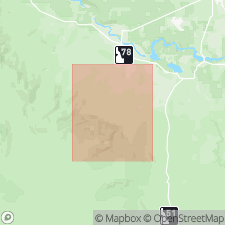
- Usage in publication:
-
- Shoofly oolite
- Modifications:
-
- Named
- Dominant lithology:
-
- Oolite
- AAPG geologic province:
-
- Snake River basin
Summary:
Is informal, unranked unit that occurs as part of basal unit of Glenns Ferry Formation of Idaho Group along western margin of Snake River Plain. Named for exposures along Shoofly Creek, Owyhee Co, ID in Snake River basin. Type not designated. An extensive fresh-water oolitic carbonate representing the remnant deposits of a Pliocene low-salinity lake. Crops out in 45-km-long belt that trends northwest-southeast and parallels southwestern shoreline of fossil Lake Idaho. Typical thickness 10 m; maximum thickness of 12 m in Grand View, ID area. Overlies unnamed beach sands at base of Glenns Ferry; abruptly grades upward into lake-center silts and ashes. Large-scale cross-bedding commonly spans entire unit. Consists almost entirely of ooids ranging from 0.5 mm to 6.0 mm diameter. Fresh-water mollusks are common, particularly SPAERIUM and GONIOBASIS. Sparse fish fauna (especially MYLOCHEILUS ROBUSTUS and CATOSTOMUS spp.) is low-salinity lacustrine. Pliocene age following Smith (1975).
Source: GNU records (USGS DDS-6; Denver GNULEX).
For more information, please contact Nancy Stamm, Geologic Names Committee Secretary.
Asterisk (*) indicates published by U.S. Geological Survey authors.
"No current usage" (†) implies that a name has been abandoned or has fallen into disuse. Former usage and, if known, replacement name given in parentheses ( ).
Slash (/) indicates name conflicts with nomenclatural guidelines (CSN, 1933; ACSN, 1961, 1970; NACSN, 1983, 2005, 2021). May be explained within brackets ([ ]).

